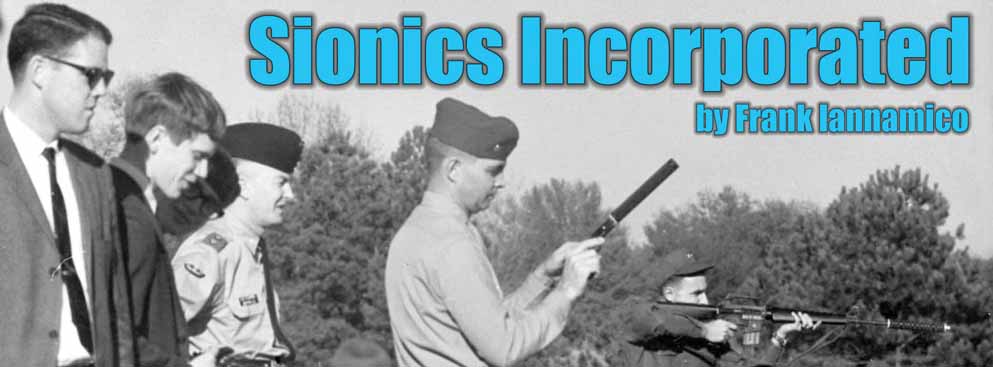Mitchell Livingston WerBell III was born on March 8, 1918, in Philadelphia, Pennsylvania to an ethnically Scottish mother and a father who claimed White Russian Cossack roots. He graduated from Staunton Military Academy in Virginia, entering the U.S. Army as a second lieutenant. A short time later the United States entered World War II after the bombing of Pearl Harbor. After a brief stint in the Signal Corps, WerBell volunteered to serve in General William “Wild Bill” Donovan’s newly formed Office of Strategic Services (OSS), the forerunner of the modern CIA. WerBell was assigned to carry out covert missions behind Japanese lines in Manchuria.
After the end of the war, U.S. Army Captain WerBell returned to the states and was assigned the command of an infantry company in Missouri. Before long, the routine began to bore him, and he resigned from the Army. After the Army, WerBell went into the advertising business, first in New York City, and later with a department store in Atlanta. He did well enough to purchase a large split level ranch house on a sixty-acre rural estate about thirty miles north of Atlanta, near Powder Springs Georgia. The property would become known as “The Farm.”
Sometime during the 1950s, Mitch WerBell decided to get into the clandestine weapons business. His specialty was sound suppressors and he called his company Sionics; an organization that specialized in counterinsurgency equipment. The acronym Sionics stood for Studies in Operational Negation of Insurgency and Counter Subversion.” Sionics was originally established on the Mitchell L. WerBell, III estate located near Powder Springs, Georgia in 1966. Ben Kohler, Eunice Creel and Betty Chatam incorporated Sionics in Georgia during 1967. The corporate address was; Sionics, 1655 Peachtree Street NE, Atlanta, Georgia 30309. Mr. Fred N. Brown was the president of Sionics and Mitch WerBell served as Vice President, Director of Research and Development.
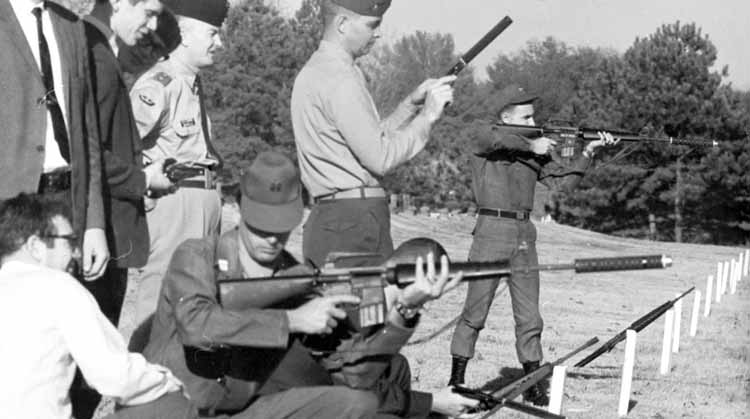
Sionics Sound Suppressors
When originally established, Sionics was a company that supplied suppressors and similar items for covert operations by military and CIA type organizations. The suppressors that Sionics designed and sold consisted of a series of baffles and replaceable wipes to suppress muzzle blast. The life expectancy was six-months or 200 rounds before the unit’s efficiency deteriorated and the internals required replacement. A wipe replacement kit was available as a separate item. Mitch WerBell’s achievements in suppressor design are often regarded as the most significant advancements since Hiram Maxim’s silencers were introduced at the turn of the century. WerBell was granted three patents covering his suppressor designs. Suppressors were produced for the U.S. M14 and M16 rifles, and other weapons, with the U.S. Government being one of Sionics’ best customers. Sionics also manufactured a number of pistol suppressors in a variety of calibers and applications.
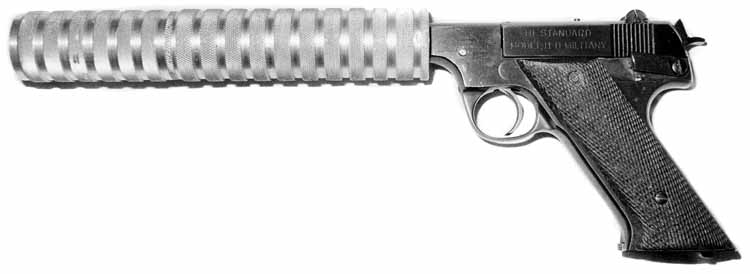
Suppressed Weapons
During the Vietnam War, an entire new class of weapons were fielded, primarily to support the widespread use of unconventional warfare tactics by U.S. Special Forces. These elite troops seldom fielded standard weapons issued to the conventional Army and Marine infantrymen. Prominently featured among the wide variety of foreign and domestic small arms used by Special Forces were silenced weapons.
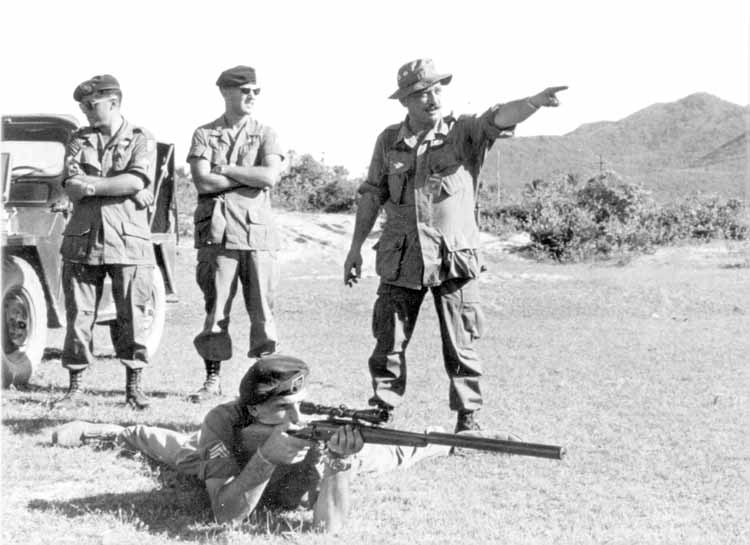
To generate sales of their suppressed sniper rifles, live fire demonstrations were performed, primarily at the Marine Base at Quantico, Virginia and the Army’s Fort Benning, Georgia. Other times a rifle would be shipped gratis to an influential officer at a military installation for his evaluation. As the Vietnam War began winding down, military sales of suppressors and sniper rifles fell off to almost nothing. At this time, Sionics turned their marketing efforts toward the law enforcement community.
Rifle Suppressors
Sionics sound suppressors were first procured for use in Vietnam during 1969. The Army’s interest in Sionics came from a relationship between personnel from the U.S. Army’s Marksmanship Training Unit, and Sionics engineers, while working to develop an effective and stealthy sniper rifle. The 7.62 NATO, M14 (XM21) rifle fitted with a Sionics suppressor and Starlight night vision scope was a very effective tool for dispatching enemy soldiers at night. A number of Sionics suppressors were purchased by the Army but were never officially adopted.
The M14SS-1 Sionics Suppressor
The Vietnam era Sionics suppressor designed for the 7.62 NATO M14 rifle was the M14SS-1. The outer tube was manufactured from .090-inch thick 6061-T6 aluminum alloy that was anodized a flat black color. The rear retaining collar and many of the internal parts were made of 4130 steel that was phosphated to resist corrosion. A unique feature of Sionics’ rifle suppressors was the implementation of a gas valve. Designed to reduce blowback pressure; it was mounted on the outer case at the rear chamber. A valve was used on early production, but the springs in the valves failed during full-automatic fire. A new spring was made from a heat-resistant super-alloy called Inconel, but these also failed. The valves simply could not hold up to the gas pressure generated by firing and would fail after a short period. To solve the problem, the relief valve was eventually replaced by a simple relief port. The port was designed to reduce blowback pressure and was mounted on the outer case at the rear chamber. To thread the suppressor onto the barrel of the M14 rifle, the flash-hider and front sight assembly had to be removed, necessitating the use of a telescopic sight. A Teflon bushing was placed between the retaining collar and base of the unit that sealed and aligned the suppressor on the rifle. The tube was 12.75-inches long with an outside of diameter of 1.665 inches. The bore was .375-inches in diameter and the assembled unit weighed 1 pound, 15 ounces. The M14SS-1 suppressor was designed for semiautomatic fire only. Nearly all of the M14 suppressor production went to the U.S. Army, Fort Benning, Georgia, the U.S. Army Rock Island Arsenal and the U.S. Navy, San Diego, California. A small number of the suppressors went to the FBI and Aberdeen Proving Center, Maryland.
The Sionics M16 MAW-A1 Suppressor
During the Vietnam War, the small caliber 5.56x45mm M16 rifles were not fielded as part of any known sniper program. However, suppressor equipped M16 rifles were regularly employed by Special Forces for covert operations, long-range reconnaissance missions and ambushes during the war. There were several early experimental M16 suppressor designs made by Sionics. Ongoing testing and research resulted in numerous improvements that were implemented in the production MAW-A1 model (Moderator Automatic Weapon – Alteration 1).
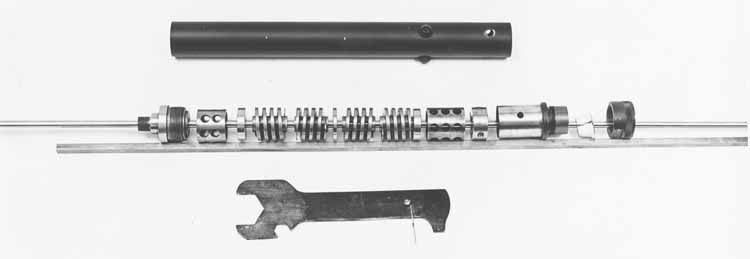
On one early prototype M16 suppressor, a threaded stud was added to the front to attach the M16 flash hider. The attachment of the flash hider made the suppressor equipped M16 excessively long and cumbersome. The production version did not include a provision for a flash hider. The Sionics MAW-A1 suppressor was 12.63 inches long with an outside diameter of 1.235 inches, the bore was .302 inches and the unit weighed 1 pound, 12 ounces. Like the M14SS-1 suppressor, a gas valve was used on early production, but was replaced by a more durable relief port system to reduce blowback pressure; it was also mounted on the outer case at the rear chamber. Most of the suppressor’s internal components were made of stainless steel and less critical components were made of 4130 steel. The Sionics MAW-A1 suppressor was designed to withstand full-automatic fire.
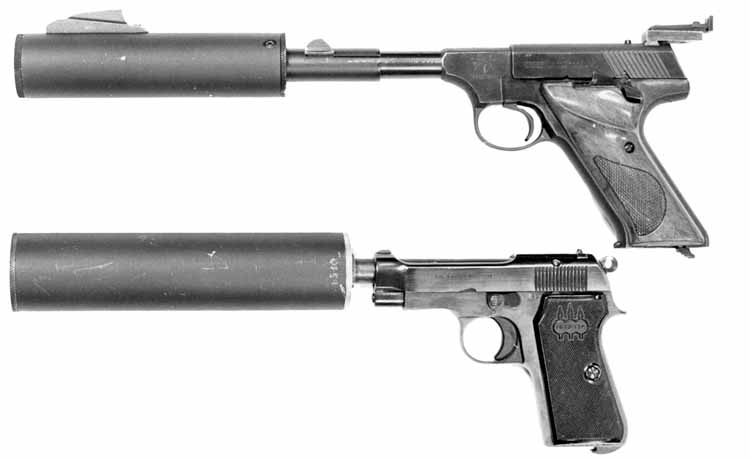
In order to be effective, the internal components of suppressors needed to be manufactured to very close tolerances. On one experimental M16 rifle suppressor design, Sionics engineers attempted to use a powerful coil spring inside the unit to keep all of the internal components in alignment. The spring eliminated the need for the precision machining on those parts. Early testing found the implementation of the spring a viable concept. However, after being exposed to the high temperatures inside the suppressor tube for an extended period, the spring began to lose tension and eventually failed. This allowed the internal components to come out of alignment, creating a dangerous situation as did occur on the firing line at Fort Benning, during a semi-official suppressor testing and evaluation session. After continued full-automatic firing of a suppressor equipped M16 rifle, the spring failed, and a bullet struck one of the baffles. This resulted in the bullet exiting the side of the steel suppressor tube at approximately a 90-degree angle, striking an adjacent shooter in the neck. Fortunately, the bullet had lost most of its energy causing only minor injuries. After disassembling the suppressor, Sionics personnel discovered that the spring had caused the suppressor failure. And it was the last time such a spring was included in any Sionics suppressor designs.
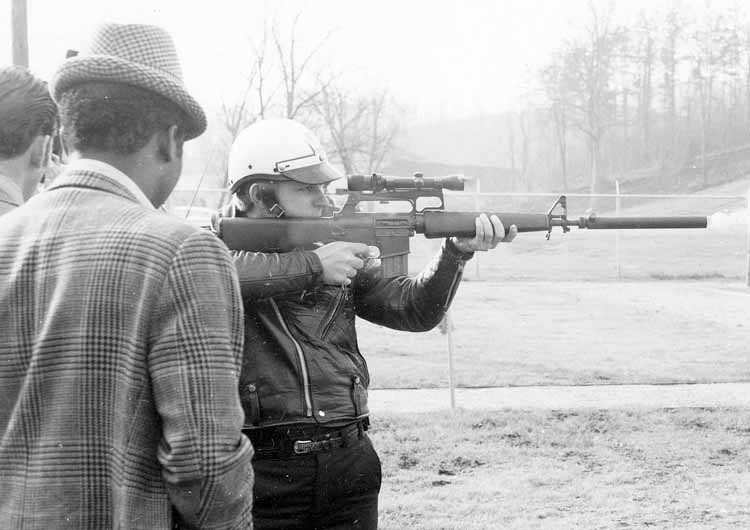
The Subsonic Ammunition Program
During the 1960s, Sionics launched an ambitious program to develop subsonic ammunition for their line of sound suppressors. Sionics relied on the expertise of local ammunition reloaders from the Atlanta area for the project. A few pistol caliber cartridges, such as .45 ACP and .380 ACP, are inherently subsonic, while most others are not. When most ammunition is fired through a sound suppressor, the velocity of the bullet breaks the sound barrier, resulting in a readily distinguishable supersonic “crack.”
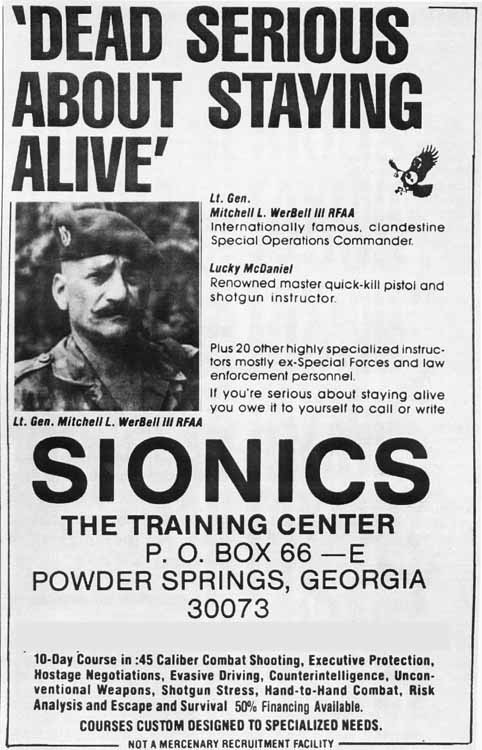
The speed of sound at 68 degrees Fahrenheit is approximately 1,127 feet per second; this speed is reduced with cooler ambient air temperature. The program began by experimenting with the 9mm Parabellum cartridge, which has an average speed of 1,150 feet per second when loaded with a 115 grain bullet. The bullet’s velocity is increased with barrel length. No insurmountable problems were encountered developing subsonic 9mm ammunition and the task was accomplished by using a heavier bullet and lighter powder charge. Developing subsonic rifle cartridges from high-velocity 5.56x45mm and the 7.62x51mm NATO military rounds was an entirely different matter.
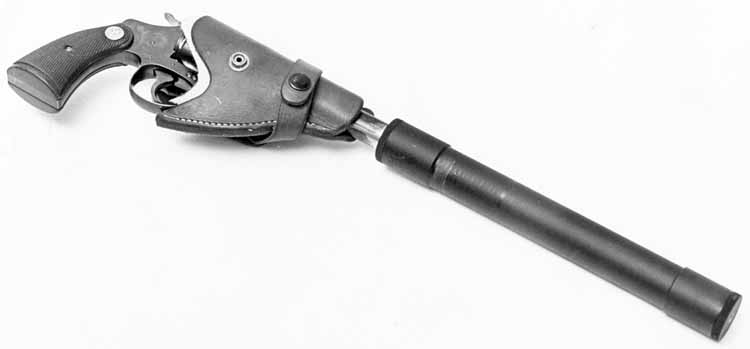
During the Vietnam War, the largest potential market for sound suppressors was for the U.S. 5.56x45mm M16 rifle, with a secondary market for the 7.62mm M14 rifle. The velocity of the two cartridges was far greater than that of the 9mm pistol round, creating quite a challenge. Development was first focused on the M16’s 5.56x45mm round. When the 5.56x45mm cartridge was downloaded to the point of being subsonic, there was a very small amount of gunpowder, and a lot of empty space in the case. If the rifle was pointed at a downward angle, the powder would shift to the front of the cartridge case, away from the primer. This resulted in very unreliable and inconsistent ignition of the powder charge. If the powder charge was directly over the primer satisfactory ignition resulted. The obvious solution was to add an inert filler in front of the gunpowder to keep it in the base of the cartridge case directly above the primer. Numerous fillers were tried including oatmeal, Cream of Wheat cereal and cotton. While the fillers solved the problem of inconsistent ignition, a new problem arose.
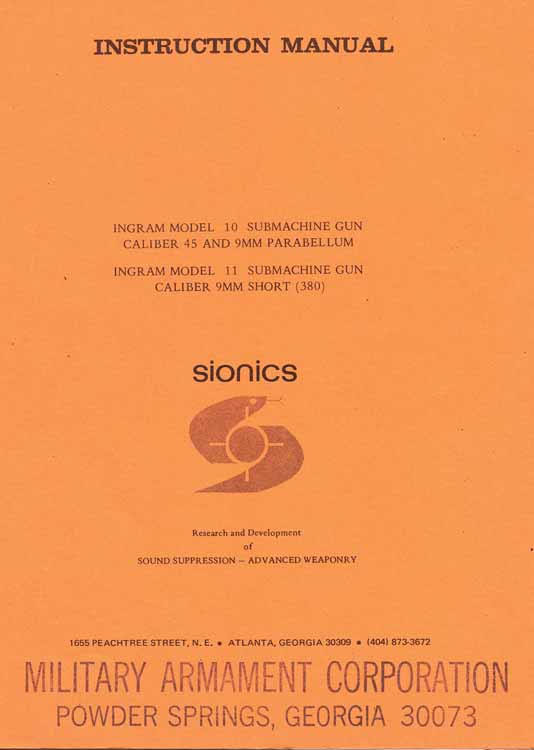
After firing just a few rounds the filler material plugged the weapon’s gas port and the suppressor’s internal components. The next step was to find a filler that would burn and not leave any residue. Nitrate paper and nitrated cotton was tried, but they did not burn completely before reaching the weapon’s gas port or suppressor, resulting in only marginal results. The next experiment was to partially fill the cartridge cases with epoxy, leaving a small centrally located cavity to load the powder in, and allow gas pressure from the burning powder to pass out. Although this method was relatively successful, the method was labor intensive, and the subsonic cartridges made by this method very expensive. The first prototype rounds were fabricated from once-fired military cases. After fully developed and marketed the bullet tips were painted green and the cartridges were packed in special “subsonic” marked 20-round boxes. While the bullets of the downloaded rounds were subsonic, they were so underpowered that they would not cycle the action of the rifles and had very limited range. Both 5.56x45mm M16 and 7.62 NATO M14 subsonic cartridges were manufactured and marketed; however, due to cartridge’s cost (.32 cents each) and poor performance, sales were limited.
The Military Armament Corporation
Soon after Gordon Ingram joined Sionics, Mitch WerBell decided that the company’s current name Sionics was not the best possible name for an organization that would be manufacturing the new Ingram weapon. The company name was then changed from Sionics to “Environmental Industries.” WerBell was not completely satisfied with the new name. A friend and Sionics’ employee, Don Thomas, had his own Class Three business called Military Armament. WerBell liked the name and convinced Mr. Thomas to allow him to use it. On December 21, 1970, the Military Armament Corporation name became official.
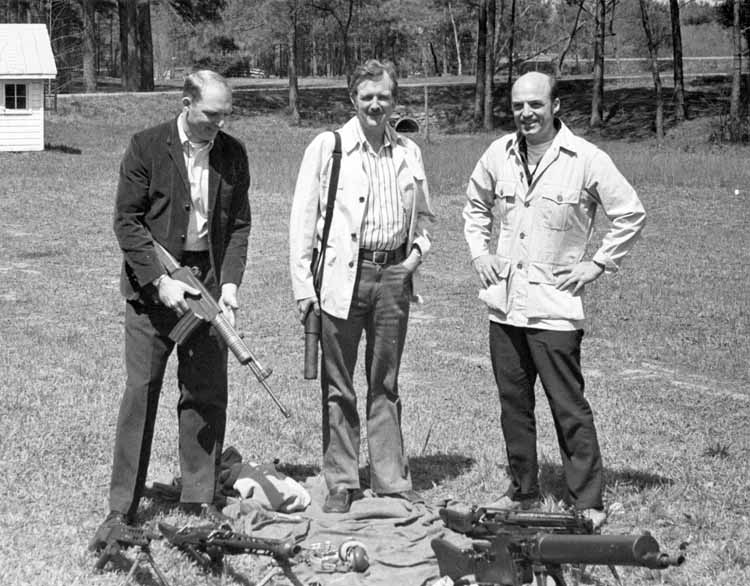
Perhaps the best known Sionics suppressors were the two-stage type designed and produced for the Ingram submachine guns. Mitch WerBell III considered the Ingram submachine gun, when fitted with one of his sound suppressors, the ideal covert weapon.
| This article first appeared in Small Arms Review V15N2 (November 2011) |



